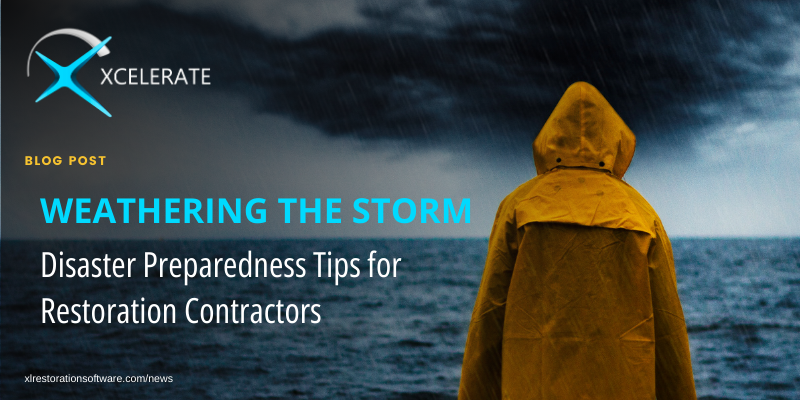Weathering the Storm: Disaster Preparedness Tips for Restoration Contractors
June 10, 2025 •Ember Davis

As a restoration contractor, you know that disasters can strike at any moment—whether it's water damage from burst pipes, fires destroying properties, or severe storms causing structural havoc. Your role in emergency response restoration is essential in bringing businesses and homes back to life.
But just as you are skilled in disaster recovery, it's equally important to prepare your own restoration business for emergencies. Having a disaster recovery and business continuity plan in place ensures your operations remain intact, your team stays safe, and you can continue serving clients when they need you most.
In this guide, we’ll outline key business disaster recovery strategies to help your restoration company stay resilient in the face of unexpected crises.
1. Develop a Comprehensive Disaster Plan
Creating a disaster recovery and business continuity plan is the foundation of a strong emergency preparedness strategy. This document should outline step-by-step protocols for handling different types of emergencies your restoration business might encounter, from natural disasters to equipment failures.
A well-structured communication network should connect your restoration team, vendors, suppliers, and emergency response services to ensure seamless updates and coordinated disaster response. It should also be a living document, regularly reviewed and updated to align with industry best practices and evolving risks.
By proactively maintaining this plan, your business can minimize disruptions, protect employees, and ensure a swift recovery when disaster strikes. For more on optimizing business operations with strategic planning, check out SOPs in Restoration.
2. Establish Communication Channels
During a disaster, effective communication is crucial for swift coordination and decision-making. A well-structured communication network should connect your restoration team, vendors, suppliers, and clients to ensure seamless updates and emergency response.
Implement reliable systems that can quickly disseminate critical information and provide real-time updates. This may include mass text alerts, mobile apps, or cloud-based platforms to ensure that all stakeholders remain informed and safe.
By establishing clear communication protocols, your business will be better equipped to handle crises efficiently and support a smooth business disaster recovery process.
3. Protect Critical Business Data with Backups
Data is one of your most valuable assets in today's digital age. Losing essential information—such as client records, project details, and financial data—can severely impact recovery efforts after a disaster. A disaster recovery and business continuity plan should include regular data backups to ensure smooth operations even in times of crisis.
Cloud storage solutions provide a secure and accessible way to protect critical files, allowing quick retrieval when needed. Implementing automated backups and storing copies offsite or in the cloud helps prevent data loss, keeping your business operational during and after an emergency.
4. Strengthen Disaster Preparedness Through Local Partnerships
Building relationships with local emergency services, fire departments, and law enforcement agencies can be invaluable in business disaster recovery efforts. These experts offer critical insights, resources, and guidance that can enhance your disaster preparedness strategy.
By collaborating with local authorities, your restoration business gains access to up-to-date emergency protocols and response coordination. These partnerships help ensure a faster, more effective reaction during a crisis, improving safety measures and minimizing potential damage.
For official government recommendations on emergency preparedness, visit Ready.gov’s Business Continuity Planning Guide.
5. Train Your Team for an Effective Emergency Response Process
Equipping your team with the skills to respond effectively during disasters is essential to maintaining a safe and efficient work environment. Comprehensive emergency response restoration training should cover a variety of disaster scenarios, ensuring that every team member knows how to act under pressure.
Key areas of safety training include first aid, evacuation protocols, and proper procedures for handling emergencies. A well-trained team not only minimizes risks but also ensures a faster, more coordinated response—helping to protect employees, clients, and property during critical situations.
6. Stock Essential Supplies for Effective Damage Restoration
Having a well-stocked emergency kit is a crucial part of disaster preparedness. Your business disaster recovery strategy should include supplies that allow for a quick and effective response to emergencies.
An emergency kit should contain first aid supplies, flashlights, batteries, tools, and other necessities for immediate action. Additionally, given the nature of your restoration business, it’s wise to stockpile essential restoration equipment that may be required during the recovery phase. Having the right tools on hand ensures you can respond swiftly and efficiently when disaster strikes.
7. Secure Your Business Premises for Effective Property Restoration
Protecting your physical workspace is a key component of commercial disaster recovery. Conducting a thorough assessment of your business premises can help identify potential hazards and vulnerabilities before disaster strikes.
Take proactive measures such as securing heavy equipment, installing fire extinguishers, and fortifying areas prone to flooding or structural damage. Strengthening your facility not only enhances safety for your team but also minimizes operational disruptions, ensuring your business can recover quickly from unexpected events.
8. Develop a Business Continuity Plan for Disaster Recovery
Disasters can severely disrupt normal business operations, but a well-structured disaster recovery and business continuity plan can help mitigate financial and operational losses. Proactively developing strategies to maintain essential functions ensures your restoration business remains resilient in the face of unexpected challenges.
Consider implementing remote work arrangements, establishing alternative communication channels, and setting up backup systems. These measures allow your team to continue operations, serve clients effectively, and reduce downtime during recovery efforts. A strong business continuity plan provides a roadmap for stability and long-term success.
Investing in the right technology can also improve long-term financial stability. Learn more about the long-term gains of investing in restoration technology.
9. Evaluate Insurance Coverage for Disaster Protection
Having the right insurance coverage is a crucial part of business disaster recovery. Reviewing your policies ensures that your restoration business is financially protected against a wide range of disaster scenarios.
Understanding the extent of your coverage can help mitigate unexpected costs and alleviate the financial burden of recovery efforts. Work closely with your insurance provider to assess potential risks, update policies as needed, and confirm that your business has adequate protection to withstand emergencies.
10. Enhance Your Restoration Services by Learning from Experience
Analyzing past incidents—both within your own business and across the restoration industry—can provide valuable insights for strengthening your emergency response restoration strategy. Reflecting on challenges faced and lessons learned allows you to identify gaps in your disaster preparedness plan and refine your approach.
Use this analysis to implement improvements, update procedures, and enhance overall readiness for future emergencies. By continuously adapting based on real-world experiences, your restoration business can become more resilient and better equipped to handle unexpected crises.
Prepare Today for a Stronger Tomorrow
By proactively implementing these disaster preparedness strategies, you not only safeguard your restoration business but also protect your team, clients, and community. Weathering the storm isn’t just about reacting to emergencies—it’s about having a solid plan in place to ensure resilience and long-term success.
To streamline your disaster recovery and business continuity plan, consider using Xcelerate Restoration Software. With advanced CRM and job management tools, Xcelerate helps restoration businesses stay organized, improve efficiency, and respond to disasters with confidence. From managing critical data to optimizing team coordination, Xcelerate ensures that your business is prepared for any challenge.
Your preparation today lays the foundation for a more secure and thriving restoration business. Start strengthening your disaster readiness now.

